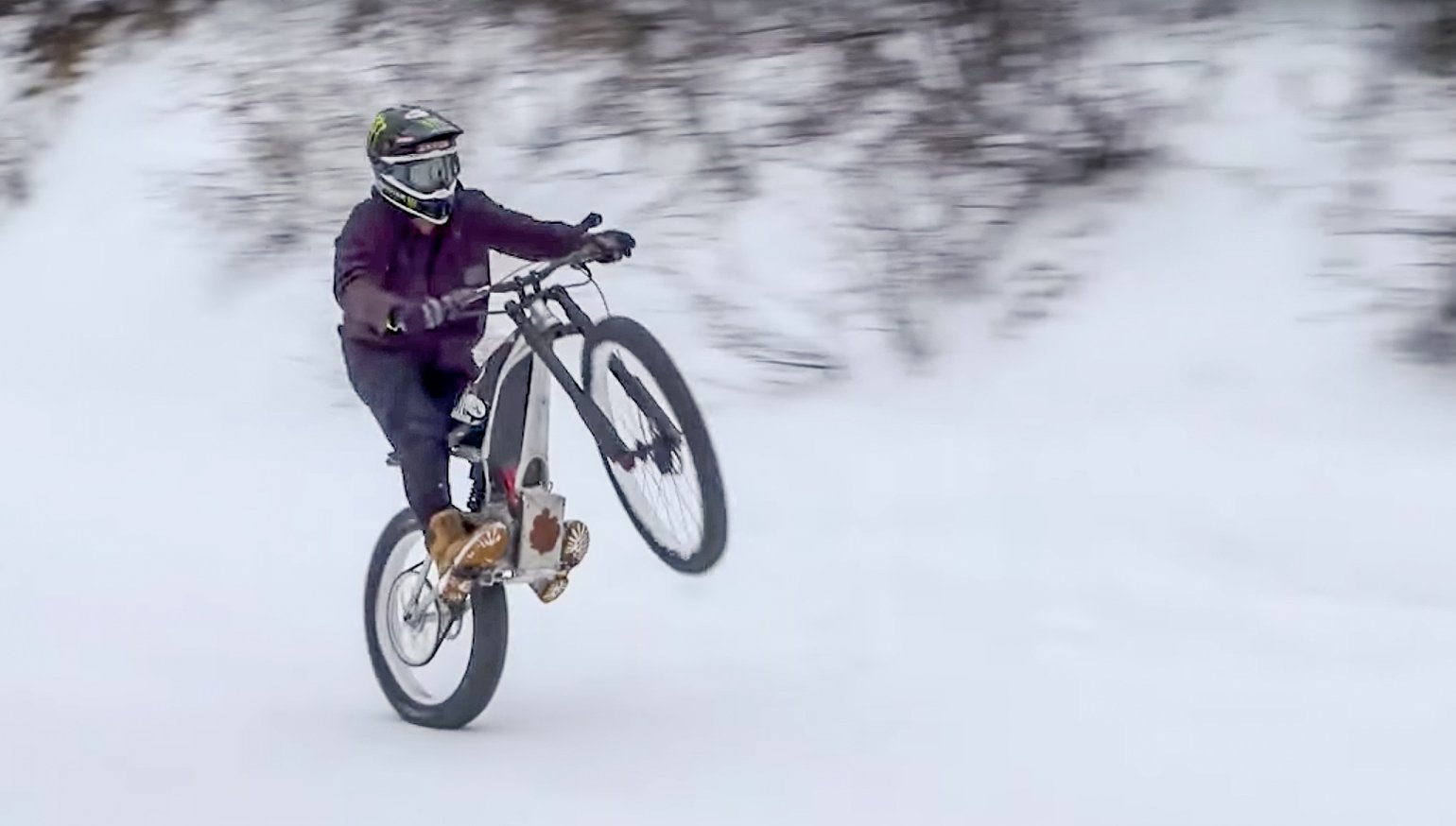While Harley-Davidson’s X Games hillclimb stole the public’s attention on the slopes, the future of HD’s line quietly roamed around behind the scenes.
I’m talking about those two lightweight concepts shown along with the LiveWire at CES. Turns out, Harley’s got working prototypes of both, and they turned them loose in the Aspen snow for our first look at next-gen Harley electric bikes other than the LiveWire. So are they any good?
First up is the electric mountain bike concept, tested by Jackson “Jacko” Strong. Strong is an Australian freestyle motocross and snowmobile rider, X Games gold medalist three times over, and among the few to have landed a double backflip in the dirt. I’m thinking he’s qualified.

The model, still unnamed, had no problem ripping around the snow. “I think they’ve met at a really great place between the mountain bike and dirt bike world,” observed Jacko. But how long will it run on a charge, and how far? HD’s not saying yet. The Sur-Ron Light Bee, a $3,890 competitor, managed 40 miles in almost two hours during a test on hilly roads. If Harley can beat those specs, price, or both, their little hybrid could be a winner. That said, I’m surprised to see a belt drive on a dirt machine. Hey, it’s just a concept, and that’s fine for snow. They did fit it with a more practical seat than the initial concept’s, a step in the right direction.
On to the scooter. Again, it’s a prototype, and it looks like one too on its road test with X Games host Jack Mitrani. With the covers off, we get a decent view of the motor and battery compartments. It’s surprisingly compact. The concept’s skateboard-sawed-in-half floorboards remain, as well as the handlebar and fat tires. A belt drive pushes the little scoot around Aspen’s streets. Looking at this Instagram post, you’ll spot a Wisconsin moped license plate tucked under the seat. Will the production scooter qualify too?
If you watch frame by frame, you’ll notice “ICE Technologies” on the brake rotor, plus a funky caliper. These brake pads from Shimano use cooling fins to dissipate heat while gripping an aluminum rotor clad in stainless steel. When stopping an electric scooter, for example, motorcycle discs would be overkill but bicycle brakes could be overwhelmed. These units split the difference.

Harley made sure to mention that both bikes are just prototypes, not production models, but it’s good to see them pulling from the bicycling world to advance their smaller electric models.
While HD hasn’t released many other details about these machine, we do have a clue to their prices. “The upcoming electric portfolio will feature a spectrum of models and price points from a few thousand dollars to Harley-Davidson’s halo electric motorcycle, the LiveWire at $29,799,” Harley announced in a press release. The bikes shown are basically two pedals away from ebikes, so I’d place them firmly at the entry-level end of HD’s proposed range. A few grand for a commute-scoot or a campus runaround is not outrageous in the EV market. If they get the positioning right, HD will have two very accessible products to offer.
During his test ride, Mitrani noted that “everywhere I went, people were stopping and taking photos.” Isn’t that what these electric bikes are all about? Reaching new riders with new technologies and designs? Always good to see people excited about getting on two wheels. Time will tell how this strategy plays out for Harley-Davidson.

